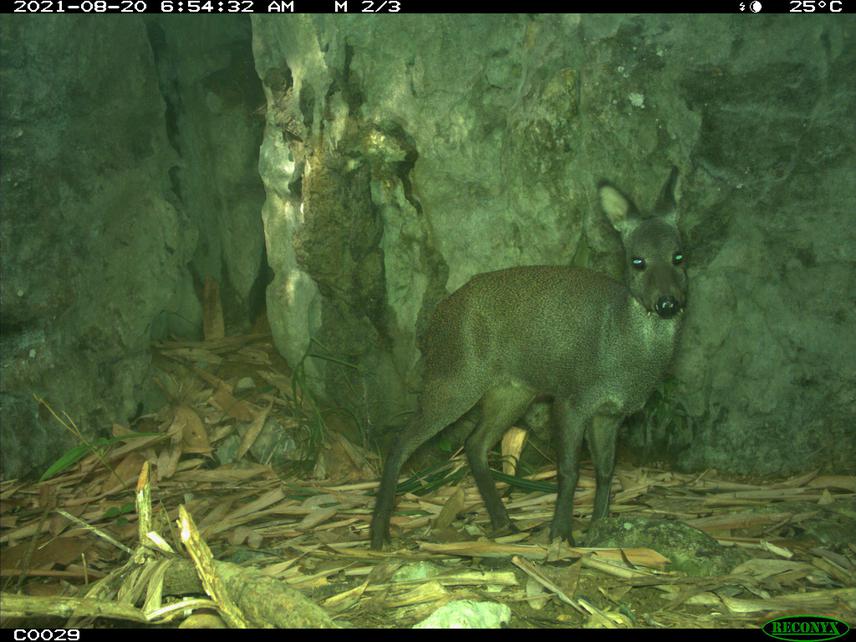Viet Dai Phan
Other projects
7 May 2021
Population Status, Distribution and Threats of the Endangered Forest Musk Deer (Moschus berezovskii) in Huu Lien Nature Reserve, Vietnam
The forest musk deer (Moschus berezovskii) is a solitary ruminant belonging to the family Moschidae. It is primarily distributed in central and southern China, as well as northeastern Vietnam (Dang et al., 2008; Wang & Harris, 2017). The species has been assessed as Endangered (EN) on the IUCN Red List of Threatened Species due to serious population decline and habitat loss (IUCN, 2023). The most recent data available on the species dates back to the 1990s, which estimated a population of 83 individuals in Huu Lien NR (Dang & Nguyen, 1999). Recently, our team confirmed the survival of forest musk deer in Vietnam through camera-trap photographs of the species in the mountainous karst forests of Huu Lien Nature Reserve (NR) (Phan, 2023; Tran et al., 2021). Additionally, we also observed several latrine sites of forest musk deer within Huu Lien NR. Musk deer establish latrine sites in specific locations and use it repeatedly (Singh et al., 2022). Latrine sites play an important role in establishing communication among musk deer.

Forest musk deer in Huu Lien NR © Dai Phan & Dung Tran/ VNUF.
However, knowledge on behaviour of forest musk deer in latrine sites is still very limited, especially for the population distributed in karst habitat. Specially, latrines sites are also frequently exploited by poachers who use them as potential locations to set snares (Singh et al., 2022). As a countermeasure against poaching, monitoring latrine sites proves invaluable in tracking the year-round movements of musk deer. Therefore, gaining insights into latrine sites, and animal behaviour can significantly bolster conservation efforts.
In the study, we aim for four specific objectives:
1. Conducting an investigation of forest musk deer’s latrine sites in Huu Lien NR.
2. Evaluating the frequency and duration of forest musk deer latrine site visitations during both breeding and non-breeding seasons.
3. Quantifying the behavioural activities of forest musk deer at identified latrine sites throughout the breeding and non-breeding seasons.
4. Implementing awareness-raising activities regarding forest musk deer conservation for the local communities within Huu Lien NR.